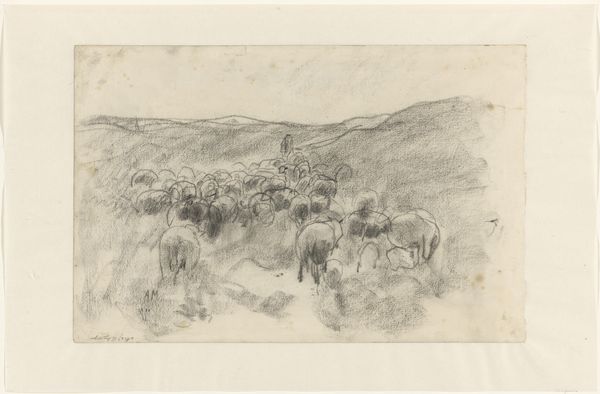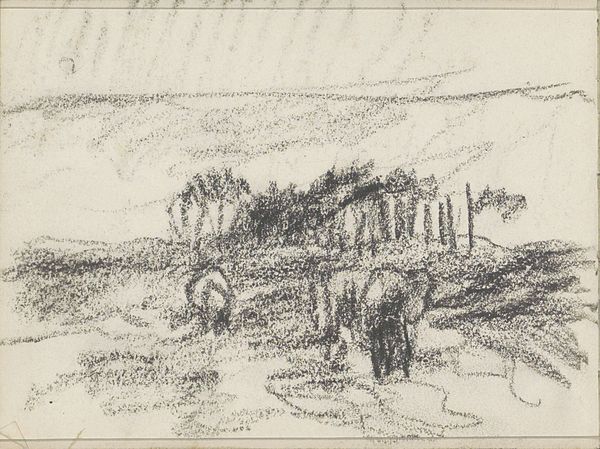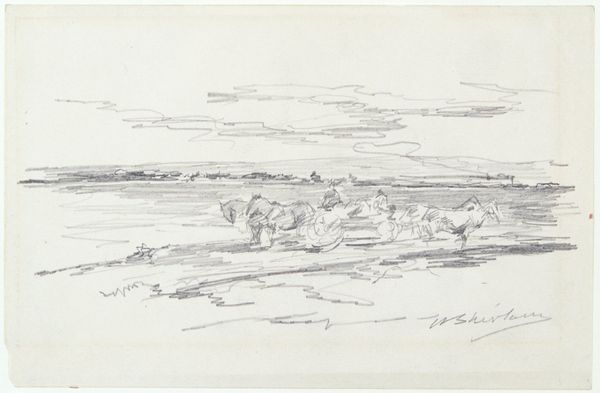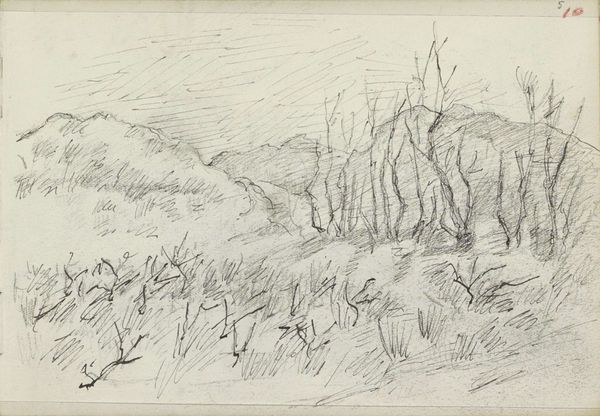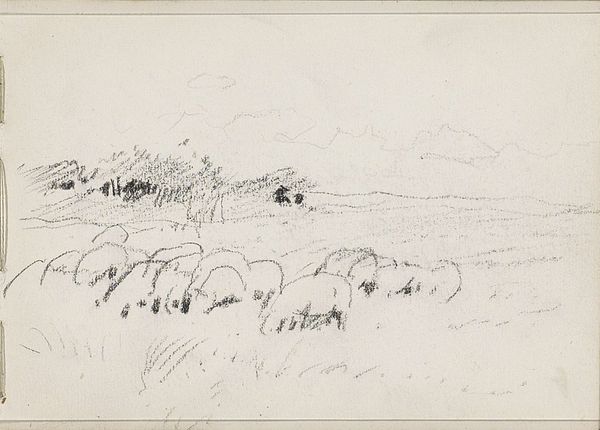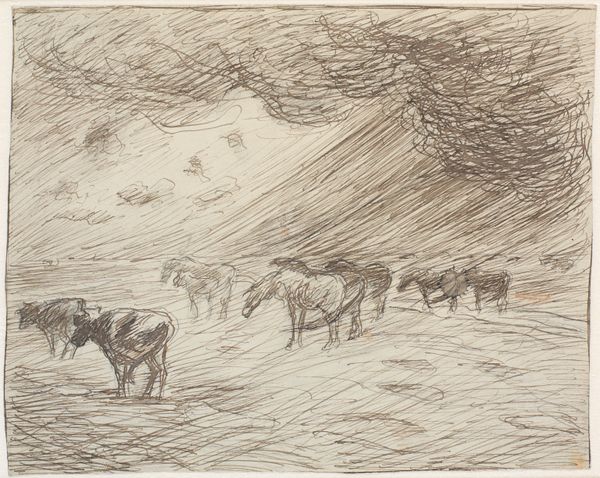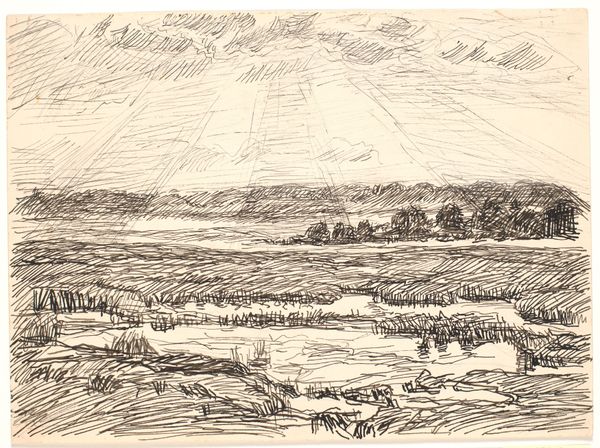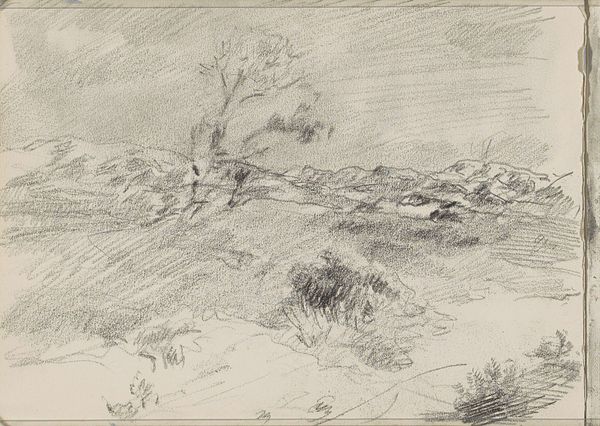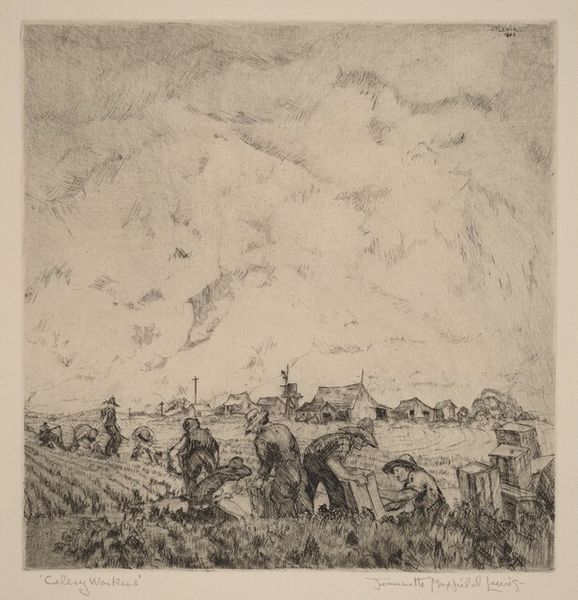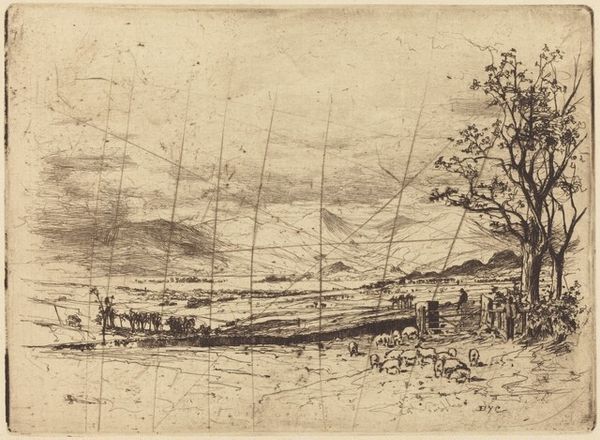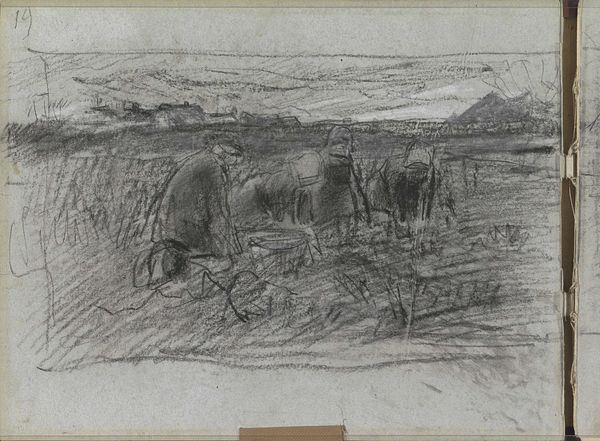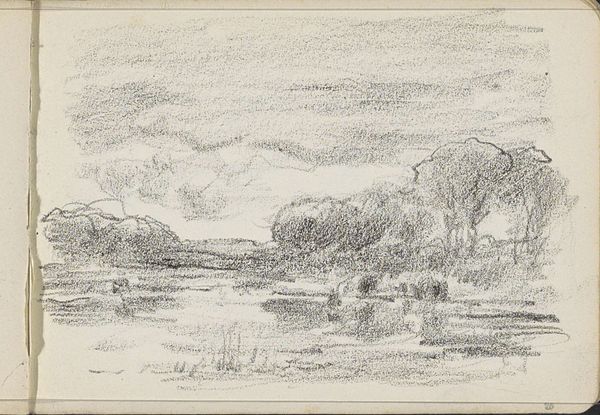
The Plain between Cannes and Mougins (La plaine entre Cannes et Mougins) 1934
0:00
0:00
Copyright: National Gallery of Art: CC0 1.0
Curator: Jacques Villon, an artist often linked with the Section d'Or group, created "The Plain between Cannes and Mougins" in 1934. It's a print, specifically an etching. Editor: Ah, it's deliciously moody. Look at the light – the whole piece shimmers like heat haze. I find myself immediately transported, smelling that dry Mediterranean scrub. Curator: Yes, it evokes a sensory experience, doesn't it? Etchings are magical in that way, with the fineness of line building up such a rich, suggestive surface. Think of the amount of work gone in the details like the mountain in the backdrop. Editor: All those intricate lines—it's like the artist is mapping not just the terrain, but some emotional geography, as well. Mountains in art often represent obstacles or spiritual aspirations. Villon doesn’t depict grandeur here but distance; the small village is far from monumental status. Curator: That’s an interesting reading. You almost feel Villon wasn’t after a straightforward realistic depiction. He seems to capture a sense of looking *back* at something. Editor: Perhaps. Or perhaps he's presenting us with the quiet drama of the everyday. These landscapes become symbols of persistence, of nature continuing regardless. We often see landscape as this passive thing but its constant slow growth implies something more. I read Villon here as the resilience, quiet power. Curator: It feels to me, like with his more Cubist explorations, he's searching for the underlying geometry of the scene. How the planes and lines meet to give a feeling of…place. The diagonal lines in the sky suggest an invisible pressure, something looming beyond what we can see. Editor: True, true. Perhaps it’s not a view, but a visual poem. This constant push and pull from a beautiful image to the dark hidden elements in nature are both combined. Curator: It reminds me, oddly enough, of some Chinese landscape paintings. A vast distance rendered with delicate, yet firm strokes. It rewards a slow, patient contemplation. Thanks for your thoughts on Villon today. Editor: My pleasure! These understated prints so often contain the biggest secrets, after all.
Comments
No comments
Be the first to comment and join the conversation on the ultimate creative platform.
